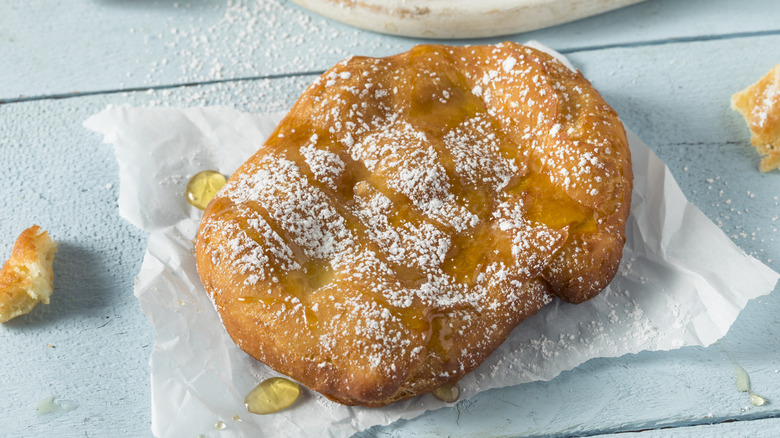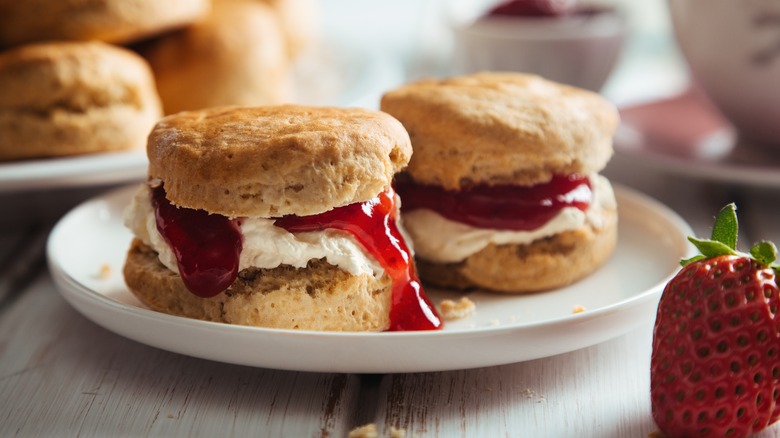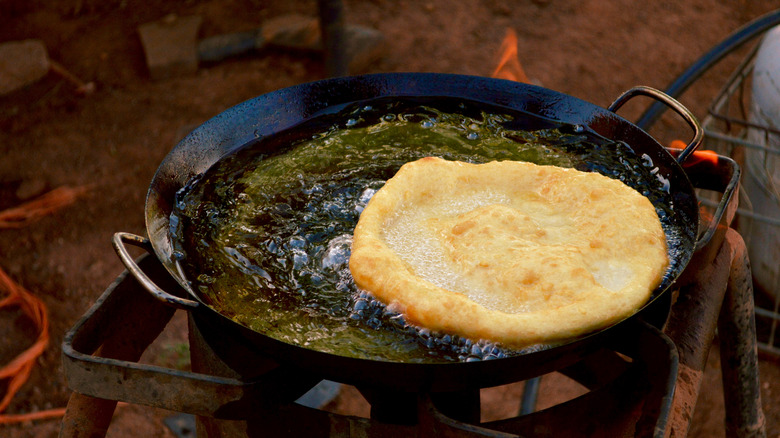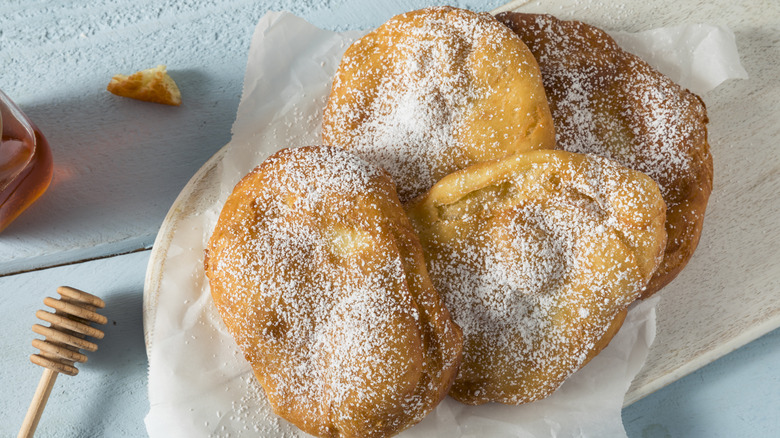What Makes Utah Scones Unique?
By the time the fair comes around, you're probably looking forward to the array of deep-fried fair foods available to you within a 10-foot radius. It's funny how the combination of oil, flour, and sugar can produce such spectacular desserts, as unhealthy as they may be. While funnel cakes and donuts occupy different spaces on fairgrounds, there is a third dessert that seems to combine the best parts of both.
Enter the Utah scone, which isn't actually a scone at all. This deep-fried bread can be likened to a beignet or a sopapilla – not, in other words, the dense, buttered biscuits we often have with tea. For Utahns, scones are homemade, deep-fried flatbreads coated in powdered sugar that can be whipped up within an hour. With a yeasty dough and crisp outer layer, the Utah scone embodies all of the good parts of the donut, packed into a single chewy bite.
How are they different from other scones?
Traditional English and American scones hardly resemble these golden brown pastries, which are closer to beignets or fry bread. English and American scones are also slightly different from one another, but they can be recognized as essentially the same type of bread.
The word scone is said to have originated from the Dutch word "schoonbrot" which translates to "beautiful bread." In the early 16th century, Duchess of Bedford Anna, who was obsessed with these fluffy single-serving biscuits, would order them every afternoon along with her tea (via Home Stratosphere). Scones eventually became an indispensable pair for English tea. English scones, which are more like the schoonbrots that the Dutch kings nibbled on, are light and simple, like flaky white bread. This is why we often see them being served with a dollop of clotted cream and strawberries (they're quite plain on their own). American scones, on the other hand, have a lot more butter and fruits, which is why they're usually served on their own.
Utah scones are not even remotely similar to these buttered, oven-baked biscuits. While the American and English scone is made with a scraggly dough of butter, flour, salt, and eggs, Utah scones are made with yeast and no butter. The yeast adds flavor and rise to this scone, making the dough more airy and sweet.
Why are they called Utah scones?
The history of these scones is murky, but they bear a close resemblance to Native American fry bread. Oklahoma Historical Society states that fry bread was invented sometime in the 19th century in the American Southwest when Native Americans were forced to relocate to desolate lands. The bread can be seen as a sign of resilience in a time when members of the Navajo Nation had to feed themselves with the little resources they had. Smithsonian Magazine notes that fry bread was what the Native Americans made from government rations of flour, oil, and sugar.
This deep-fried staple spread throughout the States, over Oklahoma, New Mexico, Arizona, and even South Dakota. The Utah scone is speculated to have been brought to Utah by Mormon missionaries who worked in reservations. While fry bread is used as savory bread, like the tortilla in Dan's Famous Indian Tacos, Utah scones are always served sweet with butter and sugar. Nobody knows by Utahns call them scones, but for anyone outside of Utah, they can be called fried scones or Utah scones.
How are Utah scones made?
A Utah scone batter is simple: it only requires all-purpose flour, sugar, egg, yeast, baking powder, and water (via Le Creme de La Crumb). The dry and wet ingredients are combined, creating a dough that is sticky and requires a little bit of kneading with a sprinkle of flour here and there. Then it's usually cut into squares or circles and flattened before they're deep-fried. Unlike donuts, Utah scones do not require much resting time for the bread to rise.
Thus, the end result is something slightly denser and flatter than a yeast donut, with all the flavors of one. The baking powder and yeast do activate in the hot oil, giving the bread a few satisfying pockets of air. Mindee's Cooking Obsession recommends serving these hot fried cakes with honey butter, cinnamon butter, or a combination of both with spiced honey butter. And everyone knows a dusting of confectioner's sugar enhances the appearance and taste of anything deep-fried.



